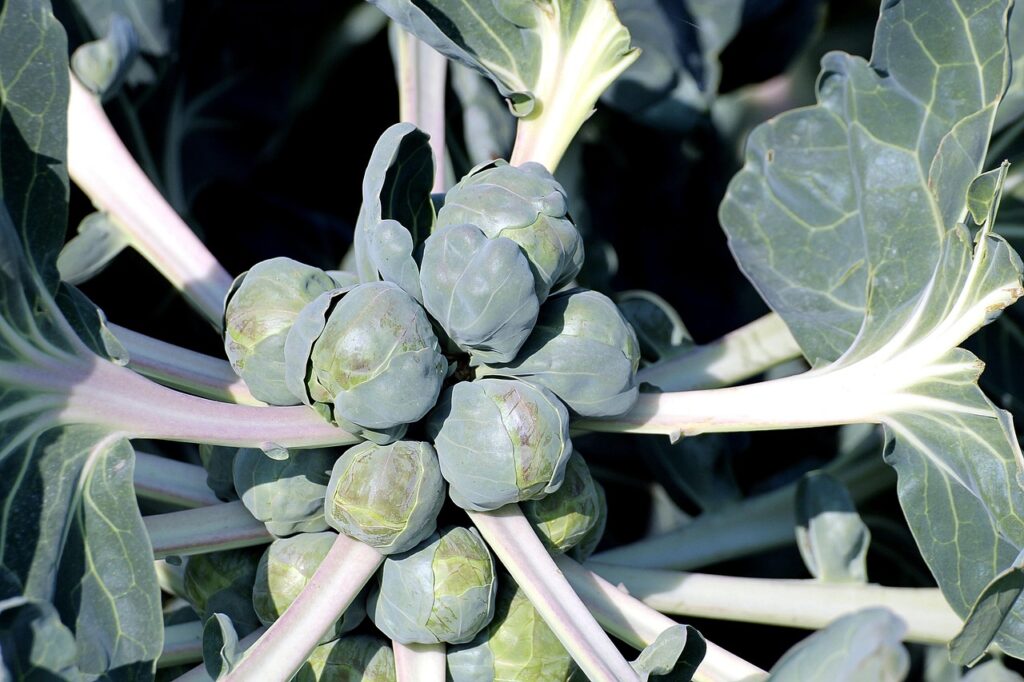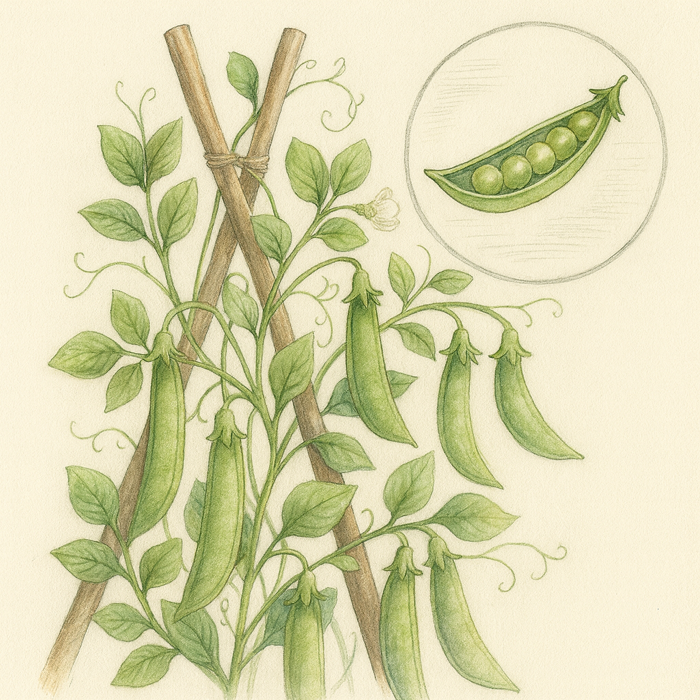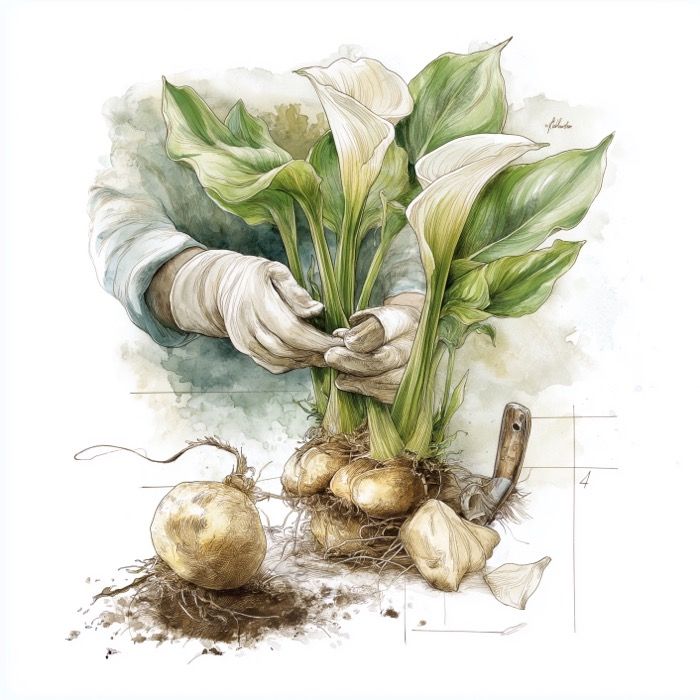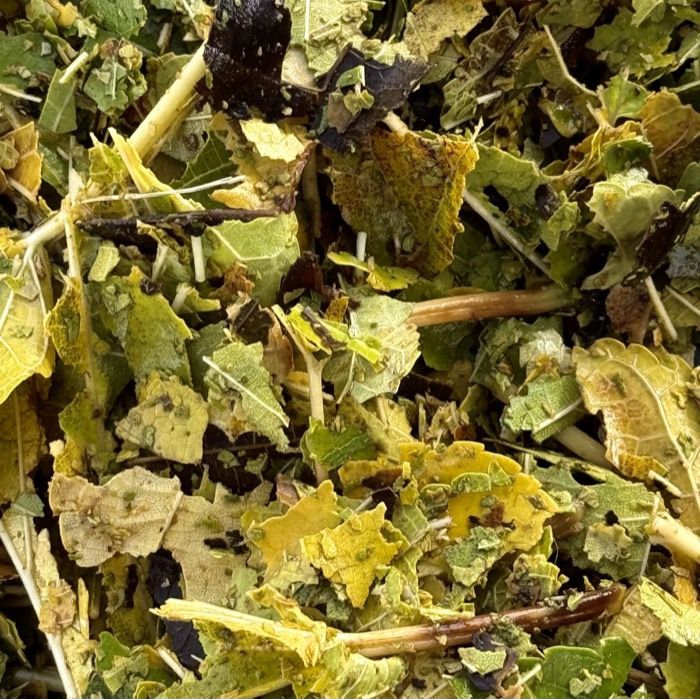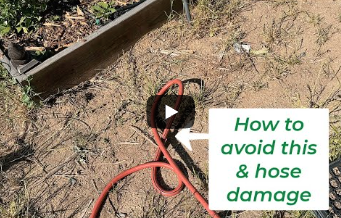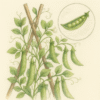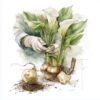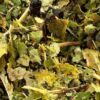Growing Brussels Sprouts
Table of Contents
- Introduction – Master Gardener Tips for Brussels Sprouts
- Planting Brussels Sprouts
- Watering & Fertilizing
- Caring for Brussels Sprouts & Pests
- Harvesting Brussels Sprouts
- Storage & Use
- Frequently Asked Questions (FAQ)
Introduction – Master Gardener Tips for Brussels Sprouts
Brussels sprouts may be small, but they pack big nutrition and flavor. These cool-season vegetables belong to the cabbage family and thrive in the garden with proper care. Learning how to grow Brussels sprouts ensures you’ll enjoy a bountiful harvest of crisp, flavorful sprouts right from the stalk. In this complete guide, we’ll cover planting, care, and harvesting so you can add this rewarding crop to your garden with confidence.
Planting Brussels Sprouts
Getting your Brussels sprouts started on the right foot is the most important step for a successful harvest. By choosing the correct season, light, and soil, you can set your plants up for healthy growth.
- Season: Brussels sprouts prefer cool weather. For a summer harvest, plant seeds in early spring, about 4-6 weeks before the last frost. For a fall harvest—which often yields sweeter, more flavorful sprouts—plant in late summer. In most zones, fall crops are the most successful.
- Light Preference: Plant in an area that receives full sun, meaning 6–8 hours of direct sunlight daily.
- Soil Type: Brussels sprouts need rich, well-drained, fertile soil with plenty of organic matter. Before planting, enrich the soil by mixing in compost or aged manure. The ideal soil pH is between 6.0–6.8. [Link to a guide on soil testing]
- Spacing: To give plants room to grow and ensure proper air circulation, space them 18–24 inches apart in rows that are at least 30 inches apart.
Master Gardener Tip: Fall plantings often yield sweeter sprouts. A light frost can enhance the flavor, so don’t be afraid of the cold!
Watering & Fertilizing
Proper watering and fertilizing are critical for keeping your Brussels sprouts healthy and productive. Consistent care helps prevent common problems and ensures a high yield.
- Watering: Keep the soil consistently moist, especially during hot weather. Aim for about 1–1.5 inches of water per week. Applying mulch around the plants is an excellent way to conserve soil moisture and reduce the need for frequent watering.
- Fertilizer: At planting, apply a balanced fertilizer (like a 10-10-10 ratio). About halfway through the season, side-dress the plants with a nitrogen-rich fertilizer to encourage strong stalk growth and larger sprouts.
Caring for Brussels Sprouts & Pests
Even with the best planning, your Brussels sprouts will need some ongoing care. This section covers key maintenance tips and strategies for dealing with common pests and diseases.
- Mulching: Use a generous layer of mulch around the base of your plants to retain moisture and suppress weeds, which compete for nutrients.
- Support: As the stalks grow tall and heavy with sprouts, they may require staking or support, especially in windy areas.
- Common Pests: Be on the lookout for common pests that love brassicas:
- Cabbage Worms: These green caterpillars can quickly chew holes in the leaves. Look for them on the underside of leaves and hand-pick them off, or use an organic spray like Bt (Bacillus thuringiensis).
- Aphids: Small, sticky insects that cluster on the plant’s new growth. A strong spray of water can knock them off, or you can apply neem oil for more persistent problems.
- Flea Beetles: These tiny, black beetles can chew many small holes in leaves. Protect young seedlings with floating row covers or apply diatomaceous earth.
- Diseases: The best way to prevent diseases like clubroot is to rotate your crops yearly. Avoid planting brassicas (cabbage, broccoli, kale) in the same spot for at least three years.
Harvesting Brussels Sprouts
Patience is key, but the moment you can finally harvest your Brussels sprouts is worth the wait. Knowing when and how to harvest will ensure your sprouts are at their peak flavor and texture.
- Timing: Sprouts are ready to harvest when they are 1–2 inches in diameter and feel firm to the touch.
- Method: Harvest sprouts from the bottom of the stalk upward, as they mature in a sequence. To remove them, simply twist off the sprout or use sharp garden scissors.
- Season Extension: A light frost improves flavor, and Brussels sprouts can tolerate cold well into late fall. A thick layer of mulch around the base of the plant can help them withstand even colder temperatures.
Master Gardener Tip: Pinching off the top of the stalk (the main growing point) about a month before your first expected harvest directs the plant’s energy into enlarging the existing sprouts, leading to a more abundant and uniform crop.
Storage & Use
Once you’ve harvested your delicious Brussels sprouts, you’ll want to enjoy them at their best. Here are some simple tips for storing your fresh harvest and preparing them for a tasty meal.
- Fresh: Freshly harvested sprouts can be stored in the refrigerator for up to 1 week.
- Longer Storage: For longer-term storage, blanch the sprouts in boiling water for 3-5 minutes, then plunge them into an ice bath. Once cool, they can be frozen for up to 12 months.
- Cooking: For maximum flavor and nutrition, roast, sauté, or steam your homegrown Brussels sprouts. [Link to a delicious roasted Brussels sprouts recipe]
Frequently Asked Questions (FAQ)
If you have more questions about growing Brussels sprouts, here are answers to a few common issues.
- Why are my Brussels sprouts so small? They may not be getting enough sun, water, or nutrients. Make sure they are in full sun and are properly fertilized, especially with nitrogen.
- My Brussels sprouts are bitter. What’s wrong? Bitterness is often caused by heat stress. Brussels sprouts taste best when they mature in cooler weather.
- Do I have to pinch off the top of the plant? No, you don’t have to, but doing so will help the sprouts grow larger and more uniformly at the bottom.
Conclusion
Growing Brussels sprouts can be a truly rewarding experience, offering you a delicious and nutritious harvest straight from your garden. By following the tips in this guide, you can overcome common challenges and enjoy the satisfaction of a successful crop. Whether you’re a seasoned gardener or just starting out, we hope this guide gives you the confidence to plant, grow, and enjoy your own beautiful Brussels sprouts. Happy gardening!
More From Our Master Gardener
Recent Posts

How to Grow Peas: The Ultimate Beginner’s Guide for Sweet, Crisp Harvests

How to Propagate and Dig Up Calla Lilies – A Step-by-Step Guide

Turn Fall Leaves into Garden Gold 🍂 | The Simple Trick Every Gardener Should Know

When and How to Dig Up Dahlias – The Best Time, Storage, and Overwintering Guide for 2025 Blooms

When and How to Dig Up Peonies – A Step-by-Step Guide for Vibrant Blooms

